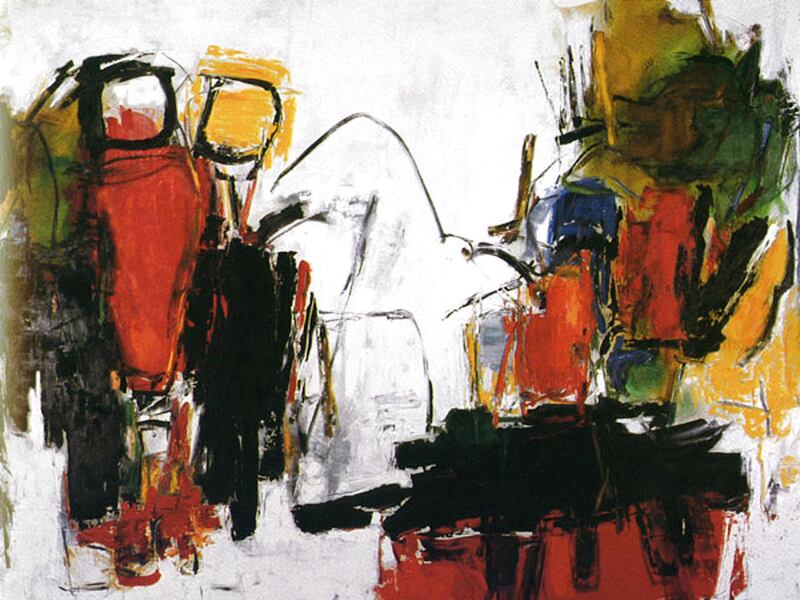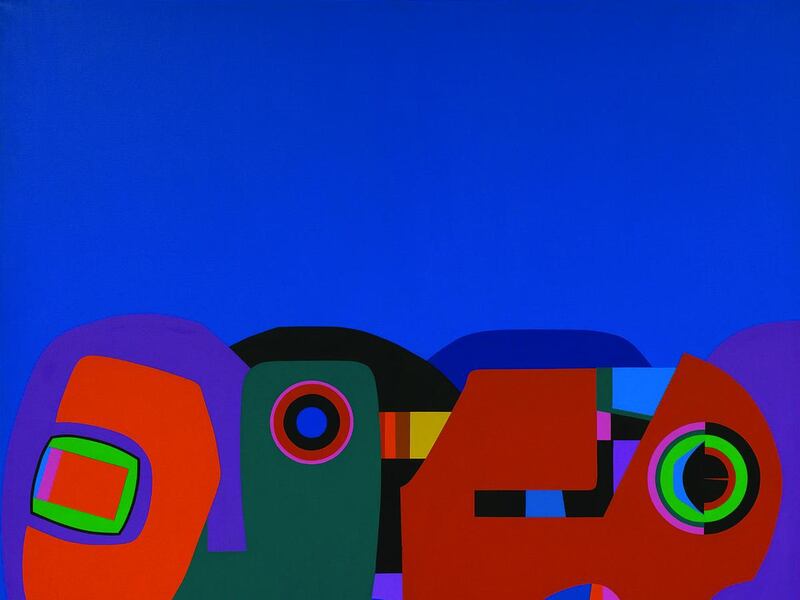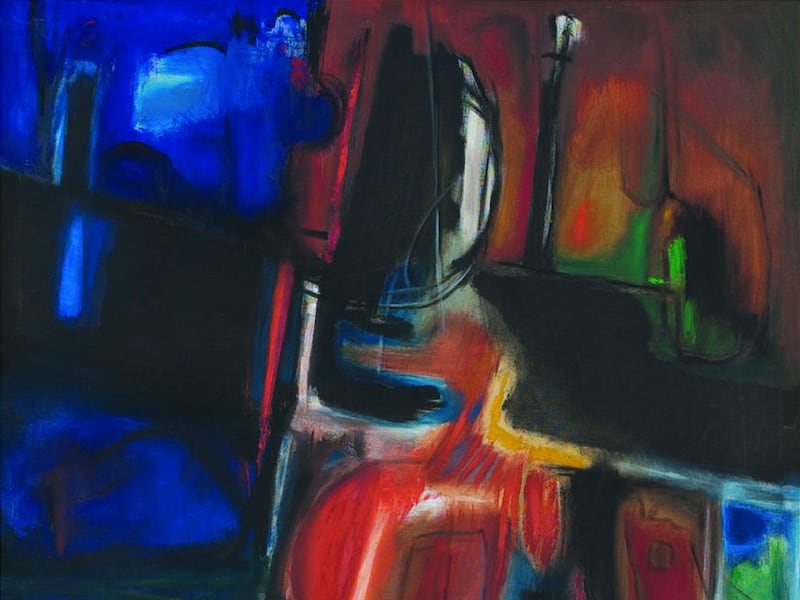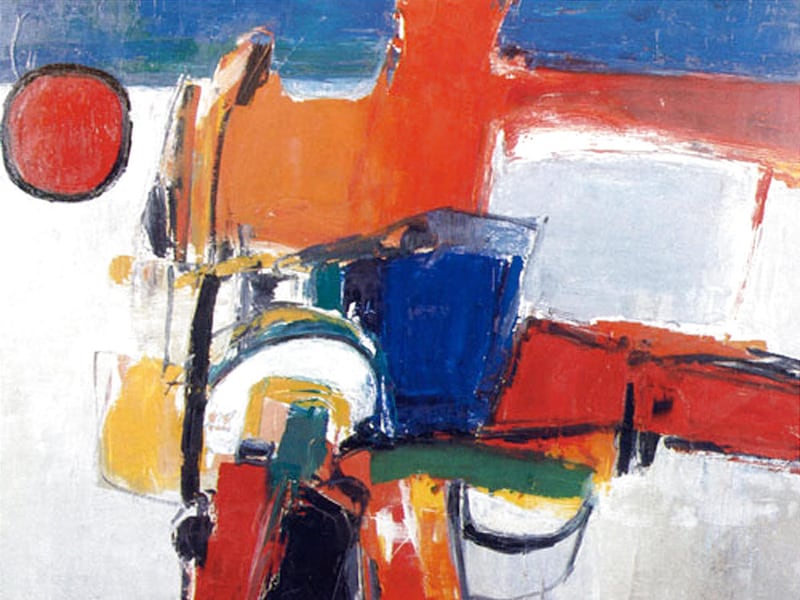When abstract art first came on the scene, it was not appreciated by everyone. Cartoonist Al Capp, creator of Lil Abner, had this to say: Abstract art? A product of the untalented, sold by the unprincipled to the utterly bewildered.
But if he was not alone in his opinion, there were growing numbers who saw in abstract art what one critic called "a visual language of form, color and line," used to create "a composition which may exist with a degree of independence from visual references in the world."
In the early 20th century, the world was undergoing major changes in technology, science and philosophy; and growing numbers of artists, beginning with Pablo Picasso and Georges Braque and their cubist approach, found a response to societal changes in abstraction.
In the 1930s, turmoil in Europe caused many artists to flee their homelands for the United States, and by the '40s, an abstract movement had become centered in New York City, around such artists as Marcel Duchamp, Piet Modrian, Jacques Lipshitz, Max Ernst and others. They, in turn, influenced later artists such as Mark Rothko, Jackson Pollock, Franz Kline and Willem de Koonig.
But abstract art was not confined to the East Coast. Utah had its own non-objective art movement, sparked by artists such as Everett Thorpe, Douglas Snow, Lee Deffebach and Donald P. Olsen.
Though perhaps not as well known as some of the others, "Don Olsen was a very influential artist in our region," says Donna Poulton, associate curator of the art of Utah and the West at the Utah Museum of Fine Arts.
Poulton has curated an exhibition at UMFA titled "Don Olsen: Abstracts from Nature," which commemorates the 100th anniversary of the birth of Olsen. It features 10 abstract, large-scale paintings created over a period of 30 years. Three of the paintings come from UMFA's collection; the rest were borrowed from private and other public collections.
"It is wonderful to have paintings of this size to fill this hall," says Gretchen Dietrich, executive director of UMFA. "This is a very exciting show for us. We like to introduce artists that many people may not be as familiar with." The exhibit will run into March.
It took a lot of courage for Utah artists to work in abstract art at a time when many New York art museums were still banning such works, Poulton says.
And Olsen's works were not always appreciated at home. When his "Abstraction #4" was exhibited at the Utah State Fair in 1953 and was bought by the state with its Purchase Prize, that generated widespread controversy. But Olsen persevered in his chosen style.
There are some people who consider Olsen to be the most groundbreaking and most important non-objective artists to have worked in Utah, Poulton says.
In "Utah Painting and Sculpture" by Vern G. Swanson, Robert S. Olpin and William C. Seifrit, the authors note that Olsen "worked through many of the modernist languages of art more brutally, from 'brush-action painting' abstract expressionism to 'hard-edge' minimalism. … For a decade he would be known solely for his large, thickly painted-with-muscle brushwork. Olsen understood the intent of abstract expression better than any other Utahn."
Olsen, who was born Dec. 3, 1910, was actually raised as a musical prodigy. He graduated from the Brigham Young University School of Music in 1935 and spent the next 10 years working with the Utah WPA Orchestra and playing first violin with the Salt Lake Symphony.
But he developed a neck problem related to violin playing that would not go away, and he was forced to quit performing in 1945. Olsen had minored in art at BYU, and decided to continue his art education at the University of Utah. Upon graduation, he became an art instructor at several Utah high schools, including Jordan High School, and later at the College of Southern Utah.
In 1954 Olsen spent a summer in Provincetown, Mass., studying with Hans Hofmann. Hofmann, who himself had studied with Picasso, was credited by many art historians with bridging the gap between emigre artists and coming-of-age American painters.
"Olsen's early abstract work was hard-edged, grayed out and more controlled than his later work," Poulton explains. "After he studied with Hofmann, his work evolved to looser, more gestural and high-keyed expressive compositions."
Hofmann introduced Olsen to his "push-pull theory of spatial tension and color relationships," she says. "Olsen became concerned with conveying the complexity of emotion in broad, sweeping strokes." For a time in the 1970s, Olsen experimented with hard-edged images, often using primary colors directly from the tube, she says. "But after he was diagnosed with cancer in 1980, he returned to loose and more expressive paintings."
The UMFA exhibition captures all those shifts and changes, Poulton says. The paintings shown were all done in Olsen's post-Hofmann period, but you see more fluid lines in works such as "Garcia Lorca," c. 1960, and "Andalusian Elegy," c. 1965, and harder edges in works such as "Bleaker," c. 1978, and "Summer," c. 1982. (Olsen didn't date any of this works, so dates are approximate.) A familiar motif in almost all of his works is "a round, red sun image," says Poulton. "He once admitted he could not get away from that."
Olsen once described his philosophy of art to art historian James Haseltine: "Painting is not an illusion. A painting can only be itself; it does not simulate, borrow from or pretend to be anything outside itself. It is a real thing and its reality lies in being itself. A painting reveals the internal expression of the artist and has nothing to do with observation of visual facts."
Throughout his career, Poulton says, "Olsen drew from his great intellect and his commitment to explore emotion through color tensions and the plasticity of his medium. He had his own way of expressing emotion, and he wanted to help viewers have their own emotional reactions."
If you go
What: Don Olsen: Abstracts from Nature
Where: Utah Museum of Fine Arts, 410 Campus Center Drive, University of Utah
When: Tuesday-Friday 10 a.m.-5 p.m.; 10 a.m.-8 p.m. on Wednesdays; weekends, 11 a.m.-5 p.m.; exhibit runs into March
Admission: adults, $7; seniors and youth 6-18, $5; first Wednesday and third Saturday of each month, free
Info: 801-581-7332 or www.umfa.utah.edu
e-mail: carma@desnews.com






